#John Dodsworth
Explore tagged Tumblr posts
Text










Dodsworth (1936) William Wyler
August 20th 2024
#dodsworth#1936#william wyler#walter huston#ruth chatterton#mary astor#david niven#paul lukas#harlan briggs#spring byington#odette myrtil#gregory gaye#kathryn marlowe#maria ouspenskaya#john payne
4 notes
·
View notes
Text
2024 Old Hollywood Movies Project
After taking everyone's Old Hollywood movies recommendations into consideration, I've come up with a list of fity or so films to watch this year. I haven't yet decided whether or not I'm going to schedule specific films to specific months (though I will watch the Christmas movies at Christmas) or if I'm going to go by decade or just by list order. We'll see!
I also want to put in a couple of Anna Mae Wong's and Buster Keaton's films, but here is the list as it stands today, January 11th, 2024:
Design for Living, 1933
Morocco, 1930
The Prisoner of Zenda, 1939
My Man Godfrey, 1936
Bringing Up Baby, 1938
Stand-in, 1937
The Thin Man, 1934
The Big Sleep, 1946
The Maltese Falcon, 1941
It Happened One Night, 1934
Ball of Fire, 1941
The Gay Divorcee, 1934
Random Harvest, 1942
Now, Voyager, 1942
Brief Encounter, 1945
Meet John Doe, 1941
The Lady Eve, 1941
The Scarlet Pimpernel, 1934
Berkeley Square, 1933
I’ll Never Forget You, 1951
The Adventures of Robin Hood, 1938
The Mark of Zorro, 1940
The Sea Hawk, 1941
Rebecca, 1940
The Bishop’s Wife, 1947
The Shop Around the Corner, 1940
Scrooge, 1951
The Philadelphia Story, 1940
Holiday, 1938
Without Love, 1945
I Know Where I’m Going, 1945
Dodsworth, 1936
The Furies, 1950
Ninotchka, 1939
Christmas in Connecticut, 1945
Gaslight, 1944
The Crimson Kimono, 1955
Sweet Smell of Success, 1957
The Little Minister, 1943
The Uninvited, 1944
His Gal Friday, 1940
Trouble in Paradise, 1932
The Scarlet Empress, 1934
The Old Dark House, 1932
The Ghost and Mrs. Muir, 1947
The Night of the Hunter, 1955
Queen Christina, 1933
Mr. Blandings Builds His Dream House, 1946
Shanghai Express, 1932
20 notes
·
View notes
Text
Mansfield Park fancast
Sir Thomas Bertram/Charles Dance 1,91m
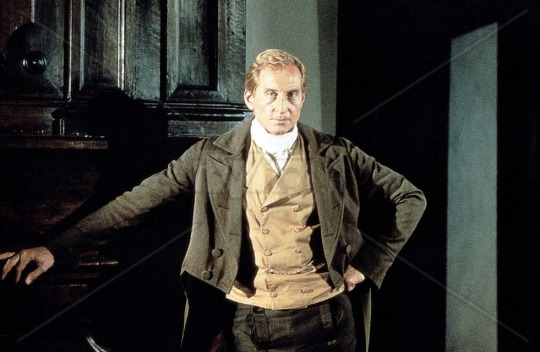
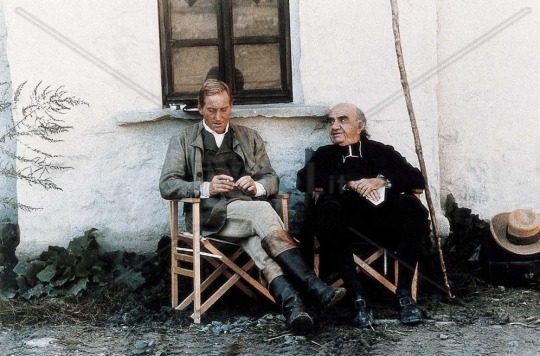
Lady bertram/Janet McTeer 1,86 m
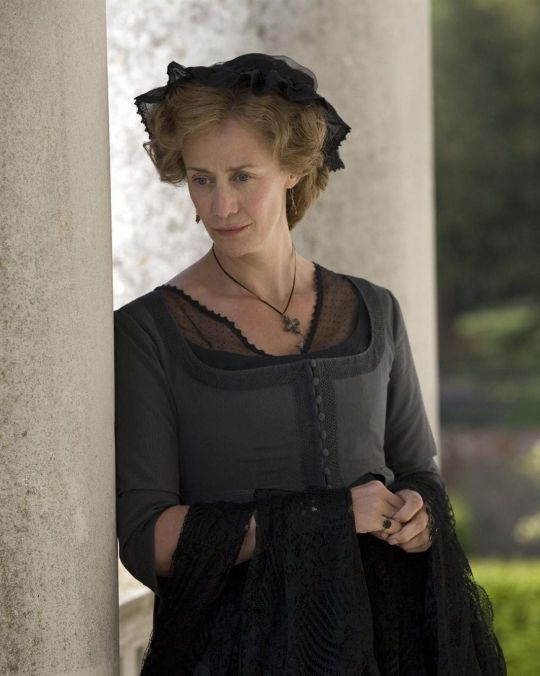

Frances Price/Maxine Peake 1,70 m

Mr Price/Jason Flemyng 1,85 m
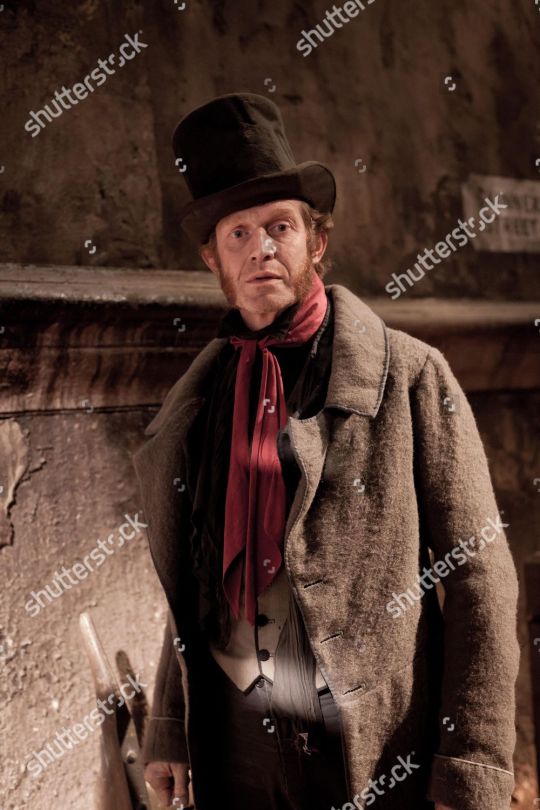
Mrs Norris/Imelda Stauton 1,52 m
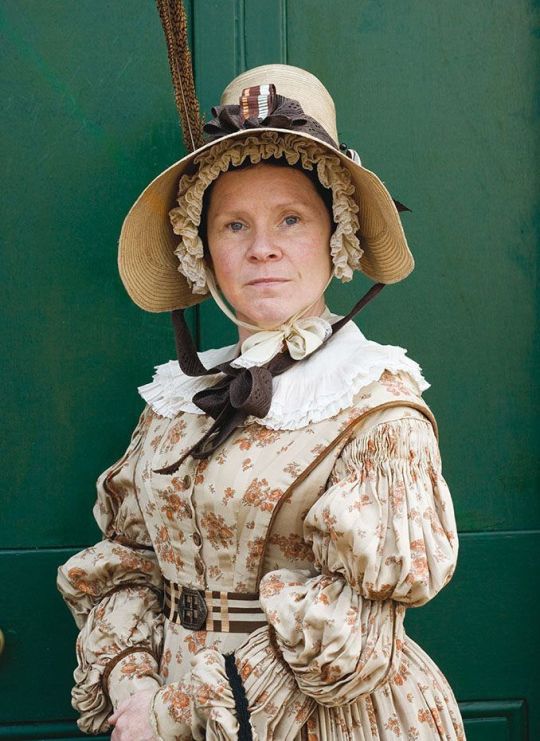
Mrs Grant/Jodie Whittaker 1,67 m
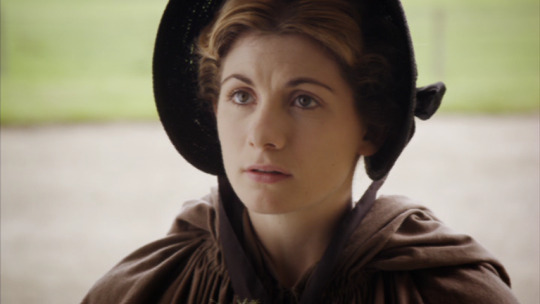
Dr Grant/Rory Kinnear 1,83 m

Tom Bertram/Sam Heughan 1,91 m

Maria Bertram/Gabriella Wilde 1,78 m


Julia Bertram/Rosamund Pike 1,74 m

Edmund Bertram/Tom Hiddleston 1,88 m


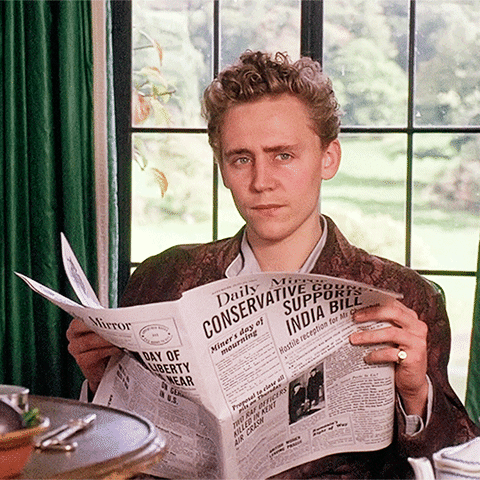
Fanny Price/Lily Dodsworth-Evans 1,69 m



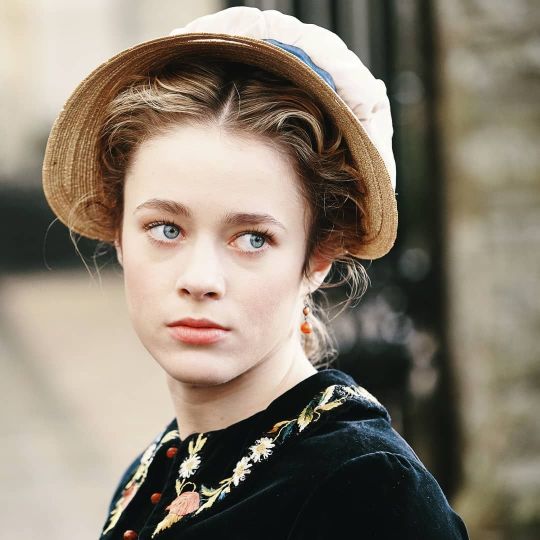
Mary Crawford/Jenna Coleman 1,57 m


Henry Crawford/Kit Harington 1,69 m
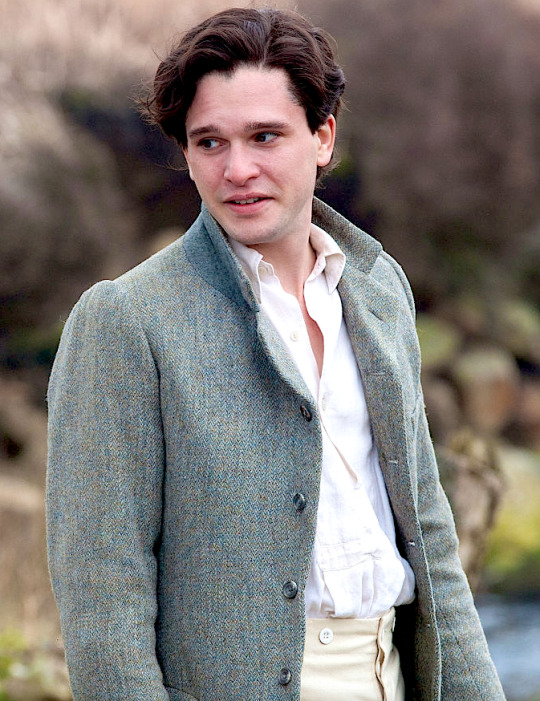


James Rushworth/Laurence Fox 1,90 m

William Price/Joseph Morgan 1,80 m
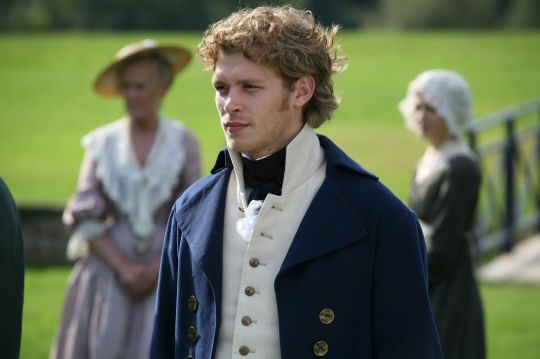
John Yates/Matt Milne 1,93 m
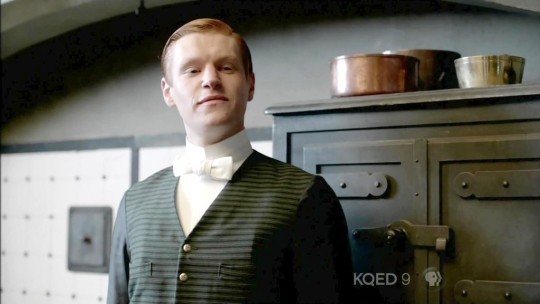
#mansfield park#henry crawford#mary crawford#fanny price#edmund bertram#fancast#i think it could've been a fairly realistic cast if their age had aligned at the right time#might switch yates and rushworth#loved Hayley Atwell but i find her a bit too tall#wanted a short Henry#immediately thinked of Kit who is quite plain without beard#jane austen
16 notes
·
View notes
Text
(WIP)
Timeline of Michael’s shows/ work up to 2013 will add more as I get the time (Taken from the Michaelgruber Angelfire website but will be updated by me at a later date (ill rb it then))
2012-2013 -- Bye Bye Birdie Chanhassen Dinner Theater, Chanhassen, MN 2012 -- Roman Holiday The Guthrie Theater, Minneapolis, MN 2011-2012 -- Hairspray Chanhassen Dinner Theater, Chanhassen, MN 2011 -- Jesus Christ Superstar Chanhassen Dinner Theatre, Chanhassen, MN 2010 -- Hairspray TUTS, Houston, TX 2010 -- Hits from The Music Man, Seattle Symphony, conducted by Marvin Hamlisch Benaroya Hall, Seattle, WA 2009 -- White Christmas 5th Avenue Theatre, Seattle, WA 2009 -- A Chorus Line National and International Tours 2009 -- Singin' In The Rain Ordway Center for the Performing Arts, St. Paul, MN 2009 -- Grey Gardens Ordway Center for the Performing Arts, St. Paul, MN 2008 -- White Christmas Theatre Under The Stars, Houston 2008 -- A Chorus Line National Tour 2007-2008 -- A Chorus Line Schoenfeld Theatre, New York City 2007 -- Stairway To Paradise - 50 Years of Revue in Review An Original Encores! Production, New York City Center 2007 -- Irving Berlin's Easter Parade - World Premier Chanhassen Theatres, Chanhassen, MN 2006-2007 -- Irving Berlin's White Christmas 5th Avenue Theatre, Seattle and California Musical Theatre, Sacramento 2006 -- My One and Only Reprise Concert Series, Freud Playhouse, Westwood, CA 2006 -- Godspell Walnut Street Theatre, Philadelphia 2006 -- Applause for the Golden Boy: The Music of Charles Strouse - benefit tribute - New York Historical Society, New York City 2006 -- Guys and Dolls Maltz Jupiter Theatre, FL 2005 -- Irving Berlin's White Christmas Wang Center Theatre, Boston 2005 -- And Then I Wrote... The Songs of Steve Marzullo - concert Birdland Jazz Club, New York City 2005 -- What A Glorious Feeling - World Premiere Production Mason Street Warehouse, MI Dec. 2004 - Mar. 2005 -- Singin' in the Rain - tour Houston TUTS Seattle's 5th Avenue Theatre Sacramento's California Musical Theatre 2004 -- Anything Goes Avon Theatre - Stratford, ON 2003 -- A Manhattan Christmas - cabaret King Kong Room, New York City 2003 -- Laughing Room Only Brooks Atkins Theatre, New York City 2003 -- Wizard of Oz Lyric Theatre, Oklahoma City 2003 -- Crazy For You Marian Theatre and Solvang Festival, CA 2003 -- Anything Goes Riverside Theatre, FL 2003 -- Taboo - reading New York City 2002 -- Ain't That a Kick in the Head - workshop The New 42nd Street Studios, New York City 2002 - Smokey Joe's Cafe California Musical Theatre 2002 -- Dames at Sea Goodspeed Opera House 2001 -- Red Hot and Blue Paper Mill Playhouse 2001 -- Kiss Me, Kate Martin Beck Theatre, New York City 2000 -- Anything Goes 5th Avenue Theatre, Seattle 2000 -- Rags Walnut Street Theatre, Philadelphia 2000 -- Singin' in the Rain Music Theatre of Wichita 2000 -- Symposium on theatre at SUNY's Stony Brook campus 2000 -- 14th Annual Easter Bonnet Competition New Amsterdam Theatre, New York City 1999 - 2000 -- Swing! St. James Theatre, New York City 1999 -- Floyd's Follies - Benefit Paper Mill Playhouse 1999 -- Tommy - concert tour 1998 -- History of Sex Golden Nugget Casino, Las Vegas 1998 -- Follies Paper Mill Playhouse 1997 -- filming of Cats video Adelphi Theatre, London 1997 -- Wizard of Oz The Theatre at Madison Square Garden 1996 -- Angela Lansbury - A Celebration - benefit tribute Majestic Theatre, New York City 1996 -- Dodsworth Douglas Fairbanks and John Houseman Theatres, New York City 1996 - 1999 -- Cats Winter Garden Theatre, New York City 1995 -- New Year's Eve Celebration Paper Mill Playhouse 1995 -- West Side Story The Muny Theatre, St. Louis 1995 -- Oklahoma! Arizona Theatre Company, Tucson and Phoenix 1995 -- Little By Little Eighty-eights Club, New York City 1994 -- Harvest of Stars - ArtsPower Benefit Paper Mill Playhouse 1994 -- Songbook Arts and Artists at St. Paul's/National Music Theater Network, New York City 1994 -- Singin' in the Rain Paper Mill Playhouse 1994 -- West Side Story Music Theatre of Wichita 1994 -- Kiss Me, Kate Goodspeed Opera House 1993 -- Little Me Birmingham Theatre, Birmingham, MI 1993 -- Falsettos Alliance Theatre, Atlanta 1993 -- Anything Goes Music Theatre of Wichita 1993 -- Good News! Music Theatre of Wichita 1993 -- Singin' in the Rain California Musical Theatre 1993 -- 7th Annual Easter Bonnet Competition Broadway Theatre, New York City 1993 -- Assisted with choreography of Singin' in the Rain Indian Hill (OH) High School 1993 -- Songs of Unlikely Lovers - A Valentine's Day Review Music Theatre of Wichita 1993 -- My Favorite Year Vivian Beaumont Theatre, Lincoln Center, New York City 1992 -- Singin' in the Rain Music Theatre of Wichita 1991 - 1994 -- Miss Saigon - original company Broadway Theatre, New York City 1990 -- West Side Story - national tour 1989 - 1990 -- A Chorus Line - final company Shubert Theatre, New York City 1988 -- Joseph and the Amazing Technicolor Dreamcoat Alaska Light Opera, Anchorage 1988 -- Dreamgirls Elmsford (NY) Dinner Theatre 1988 -- West Side Story - European Tour 1987 -- My One and Only Paper Mill Playhouse
2 notes
·
View notes
Photo
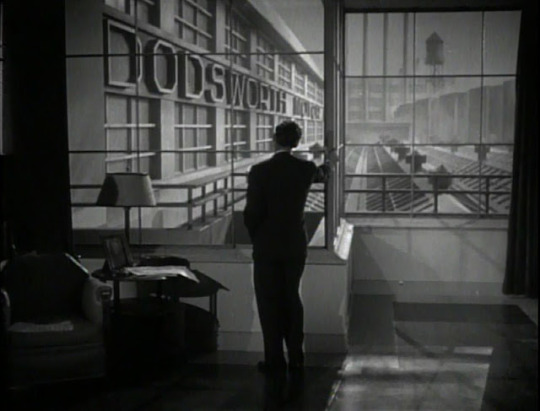
Walter Huston in Dodsworth (William Wyler, 1936) Cast: Walter Huston, Ruth Chatterton, Mary Astor, Paul Lukas, David Niven, Gregory Gaye, Maria Ouspenskaya, Spring Byington, Harlan Briggs, Odette Myrtil, Kathryn Marlowe, John Payne. Screenplay: Sidney Howard, based on his play adapted from a novel by Sinclair Lewis. Cinematography: Rudolph Maté. Art direction: Richard Day. Music: Alfred Newman. I have a feeling that Dodsworth is not quite as well known as it ought to be. It's one of the few Hollywood dramas of the 1930s that seem to have been made for grownups, avoiding melodrama and sentimentality in its treatment of marriage and growing old, and sidestepping the Production Code's infantilizing attitudes toward adultery and divorce. And most of all, it has a wonderful performance by Walter Huston, who was nominated for an Oscar but lost, rather shamefully, to Paul Muni's hammy turn in The Story of Louis Pasteur (William Dieterle, 1936). Huston's Sam Dodsworth is a captain of industry, founder of an automobile company, who decides to sell the business and spend the rest of his life figuring out what to do with himself. His wife, Fran (Ruth Chatterton), knows exactly what she wants to do: Sail to Europe and flirt with all those interesting men who can't be found in the Midwestern city of Zenith -- which was also the setting for Sinclair Lewis's novel Babbitt, whose title character became a byword for Midwestern fatuousness. Fran is a few years younger than Sam -- Chatterton was 44, Huston 53 -- and unwilling to grow old gracefully, claiming to be 35 and unwilling to reveal that she has just become a grandmother. Opportunity presents itself immediately on shipboard in the form of a British military officer (David Niven), but after flirting shamelessly with him, Fran takes fright when they reach England and he wants to take their relationship another step. But when the Dodsworths move on to Paris, Fran becomes bolder and after Sam, bored with life in Europe, returns alone to the United States for a visit with their daughter and her husband, she begins an affair with a suave European (Paul Lukas). Getting wind of the affair, Sam returns to Paris and confronts Fran, who breaks it off. But their efforts to patch things up fail and Fran asks him for a divorce. In Vienna she finds another suitor, a younger, rather effete aristocrat named Kurt Von Obersdorf (Gregory Gaye), and is ready to marry him once the divorce goes through. Meanwhile, Sam travels on his own and in Naples is reunited with Edith Cortright (Mary Astor), a divorcee he had met earlier. Sam moves in with Edith in the villa she is renting, but their happiness is interrupted by Fran's misery: Kurt's mother, the baroness (Maria Ouspenskaya), forbids their marriage on the grounds that Fran is not only divorced but also too old to provide an heir for the family line. A distraught Fran, facing up to failure, urges Sam to return to America with her, presenting him with the dilemma of continuing a marriage that has proved hopeless or exploring the new vistas that have opened for him. Lewis's novel is more in the satirical vein of Babbitt than Sidney Howard's screenplay, based on his Broadway play, which also starred Huston. It evokes Henry James's stories about American encounters with Europeans. William Wyler, with his smooth, unobtrusive professionalism, is the perfect director for the film, which was made under the aegis of producer Samuel Goldwyn, who aimed for polish and prestige and for once achieved it. Lewis's novel was published in 1929, but by the time Dodsworth was filmed, Nazism was on the rise in Germany and fascism had taken hold in Italy, so Sam and Edith's dream of traveling the world together feels more than a little naive in the context of the period. The only reference to the rumblings of war perceptible in the film comes in Sam's comment that he prefers the United States because there are "no soldiers along the Canadian border."
2 notes
·
View notes
Text
A couple, cheated by a vile businessman, kidnap his wife in retaliation—without knowing that their enemy is delighted they did. Credits: TheMovieDb. Film Cast: Sam Stone: Danny DeVito Barbara Stone: Bette Midler Ken Kessler: Judge Reinhold Sandy Kessler: Helen Slater Carol Dodsworth: Anita Morris Earl James Mott: Bill Pullman Chief Henry Benton: William G. Schilling Lt. Bender: Art Evans Lt. Walters: Clarence Felder Bedroom Killer: J.E. Freeman Heavy Metal Kid: Gary Riley The Mugger: Frank Sivero Loan Officer: Phyllis Applegate Hooker in Car: Jeannine Bisignano Technician: J.P. Bumstead Stereo Store Customer: Jon Cutler Stereo Store Customer: Susan Marie Snyder Cop at Sam’s House: Jim Doughan Cop at Jail: Christopher J. Keene Coroner: Henry Noguchi Cop with Killer Picture: Arnold F. Turner Sam’s Attorney: Bob Tzudiker Arresting Cop: Charles A. Vanegas Social Worker: Louise Yaffe Secretary to Chief of Police: Janet Rotblatt Judge: Charlotte Zucker Waiter: Art Bonilla Newscaster: Rick DeReyes Newscaster: Mie Hunt Newscaster: Ron Tank Aerobic Instructor: Susan Stadner Aerobic Instructor: Beth R. Johnson Model: Twyla Littleton Elderly Woman: Mary Elizabeth Thompson Newsreader (voice) (uncredited): Phil Hartman Film Crew: Director: Jim Abrahams Director: David Zucker Director: Jerry Zucker Screenplay: Dale Launer Executive Producer: Joanna Lancaster Executive Producer: Walter Yetnikoff Director of Photography: Jan de Bont Editor: Gib Jaffe Producer: Michael Peyser Editor: Arthur Schmidt Casting: Ellen Chenoweth Costume Designer: Rosanna Norton Unit Production Manager: Jeffrey Chernov First Assistant Director: William S. Beasley Second Assistant Director: Bruce Humphrey Art Direction: Donald B. Woodruff Music Supervisor: Tommy Mottola Set Decoration: Anne D. McCulley Supervising Sound Editor: Charles L. Campbell Supervising Sound Editor: Louis L. Edemann Sound Editor: Larry Carow Sound Editor: Samuel C. Crutcher Sound Editor: Mike Dobie Sound Editor: Chuck Neely Makeup Artist: Brad Wilder Key Hair Stylist: Barbara Lorenz Costume Supervisor: Eric H. Sandberg Sound Re-Recording Mixer: Donald O. Mitchell Sound Re-Recording Mixer: Rick Kline Sound Re-Recording Mixer: Kevin O’Connell Executive Producer: Richard Wagner Stunts: Loren Janes Stunts: Faith Minton Stunt Coordinator: Walter Scott Stunts: Charles Croughwell Stunts: Gregory J. Barnett Opening Title Sequence: Sally Cruikshank Stunts: Pat Romano Songs: Billy Joel Songs: Mick Jagger Stunts: Ralph Garrett Stunts: Gene Hartline Stunts: Diamond Farnsworth Stunts: Vince Deadrick Sr. Stunts: Richard Drown Stunts: Brad Bovee Stunts: Ray Bickel Stunts: Danny Costa Stunts: Phil Adams Stunts: Wayne King Sr. Stunts: Sasha Jenson Stunts: Carol Neilson Stunts: Max Kleven Stunts: Kathleen O’Haco Stunts: Tracy Keehn-Dashnaw Stunts: Ben Scott Stunts: John-Clay Scott Stunts: Carol Rees Stunts: Ted White Stunts: Brian Smrz Stunts: Mike Watson Original Music Composer: Michel Colombier Movie Reviews:
1 note
·
View note
Photo

Dodsworth https://tinyurl.com/26ttsuff Dodsworth is a reminder what a great actor Walter Huston was. The father of John, grandfather of Danny, great-grandfather of Jack trumps them all with a superbly relaxed and natural performance as an America car magnate being given the run...
0 notes
Photo

#dodsworth#walter huston#ruth chatterton#paul lukas#mary astor#david niven#john payne#william wyler#1936
2 notes
·
View notes
Text
Song List 0305 - Amy Winehouse - Rehab

“(...) But I said: No, no, no! Yes, I've been black, but when I come back You'll know, know, know! (...)”
Rather unfortunante association for the song, but it may help explain the difference in the head gestures of Bulgarians that work the other way around.

Singin' in the Rain (1952)
See you next time!
INFORMATION POST Song List 0304 Song List 0306
#miliantyna#song list#amy winehouse#rehab#bulgarian custom#singin' in the rain#deszczowa piosenka#jean hagen#john dodsworth
0 notes
Text
Happy 138th Birthday to Academy Award winning actor Walter Houston! Patriarch of the Houston family that includes his son, Academy Award winning filmmaker John Huston, and granddaughter, Academy Award winning Actress Anjelica Huston! ^__^
#geek#film#blog#wordpress#word press#walter huston#actor#academy award winner#the treasure of the sierra madre#yankee doodle dandy#dodsworth#abraham lincoln#the devil and daniel webster#dragonwyck#duel in the sun#the furies#dragon seed#john huston#anjelica huston#danny huston#jack huston#golden age of film#the golden age of hollywood
0 notes
Note
hello !! do you have any recommendations for 20s/30s movies?? I've been watching a lot of 40s and 50s ones lately but I'm not sure where to start with earlier stuff ❤
sure! i’m actually gonna go back even farther to the 1910s because if you’re going back that far you might as well go all the way back :) (also there was a movie i want to recommend but it’s from 1916 lol)
this is going to be long - i’ve highlighted the films i think you should start with, though i’d recommend any of these. i also just want to say that because this is my list and it’s my taste, when editing this down (yes, it was longer) i took out as many of the most “popular” films as i could because i want some underseen gems to get more love! that’s all - happy watching! 💛
shoes (1916, lois weber) scandal (1915, lois weber) falling leaves (1912, alice guy blache) mabel’s strange predicament (1914, mabel normand) bread (1918, ida may park) the dream lady (1918, elise jane wilson) the cheat (1915, cecil b. demille) the curse of quon gwon (1917, marion e. wong) la cigarette (1919, germaine dulac)
safety last! (1923, fred c. newmeyer and sam taylor) the grub stake (1923, nell shipman) the smiling madame beudet (1923, germaine dulac) sherlock jr. (1924, buster keaton) strike (1925, sergei eisenstein) the adventures of prince achmed (1926, lotte reininger) flesh and the devil (1926, clarence brown) metropolis (1927, fritz lang) sunrise: a song of two humans (1927, fw murnau) the passion of joan of arc (1928, carl th. dreyer) celles qui s’en font (1928, germaine dulac) show people (1928, king vidor) a woman of affairs (1928, clarence brown) ethnographic films (1929, zora neal hurston) the letter (1929, jean de limur) the wild party (1929, dorothy arzner)
the divorcee (1930, robert z. leonard) m (1931, fritz lang) private lives (1931, sidney franklin) merrily we go to hell (1932, dorothy arzner) back street (1932, john m. dahl) one way passage (1932, tay garnett) i am a fugitive from a chain gang! (1932, mervyn leroy) frisco jenny (1932, william a. wellman) the eagle and the hawk (1933, stuart walker) the story of temple drake (1933, stephen roberts) baby face (1933, alfred e. green) dinner at eight (1933, george cukor) design for living (1933, ernst lubitsch) night flight (1933, clarence brown) the sin of nora moran (1933, phil goldstone) journal of a crime (1934, william keighley) magnificent obsession (1935, john m. dahl) hands across the table (1935, mitchell leisen) the petrified forest (1936, archie mayo) dodsworth (1936, william wyler) born to dance (1936, roy del ruth) the last of mrs. cheyney (1937, dorothy arzner and richard boleslawski) stage door (1937, gregory la cava) the bride wore red (1937, dorothy arzner) it’s love i’m after (1937, archie mayo) the divorce of lady x (1938, tim whelen) holiday (1938, george cukor) pygmalion (1938, anthony asquith and leslie howard) the mad miss manton (1938, leigh jason) tail spin (1939, roy del ruth) love affair (1939, leo mccarey) only angels have wings (1939, howard hawks) the rules of the game (1939, jean renoir) bachelor mother (1939, garson kanin)
#asks#hope this helped anon!#also inb4 'where's this film' my list my rules babey!!!!!!!!#movie posts#Anonymous#and again. this is my taste so you'll find no horror no westerns none of that. no disrespect. just don't like them as much lol
62 notes
·
View notes
Photo

Mary Astor who would have been 115 today, could have been a leading lady any time she felt like it. She rarely did. A few of her great ones:
Edith Cortright in Dodsworth. D: William Wyler (1936). “My Dear. Don’t”, Astor says to Fran Dodsworth (Ruth Chatterton) who is about to deepen a liaison with a suave playboy (Paul Lukas) deceiving her newly retired husband Sam (Walter Huston) in this story of a decaying marriage showing its cracks on a European vacation. Later she’ll provide a peaceful haven for Sam after he realizes his marriage ended years ago. Astor plays a romantic version of a “woman of the world” in this drama of how marriages can sometimes just….end, and in a movie that treats it’s characters like grown-up people instead of vehicles for melodramatic hysterics, she offers a second chance to a newly aimless American (“Do you want to enjoy life for a while”) as the most angelic homewrecker the movies have yet offered.
Brigid O’ Shaughnessy in The Maltese Falcon. D: John Huston (1941). “You’re Good. You’re very good,” Humphrey Bogart’s Sam Spade says to Astor’s almost pathologically dishonest femme fatale and he’s only partly sarcastic. The pleasure he gets when he sees through her lies and the straight face her “woman in trouble” maintains as she spins another story on top of the last one, is this great movie’s version of a love story. Astor plays the woman whose affected vulnerability and tremulous voice has led more than a few men to play the sap for her (at the cost of their lives) as a desperate viper in a no-win situation: she has to outwit him, but doing so would disappoint her. The look on her face when she realizes she’s lost is both funny and pitiful.
Princess Centimillia in The Palm Beach Story. D: Preston Sturges (1942). Astor is like a Tex Avery version of a screwball heiress, as the daughter of one of the richest men in the world who gloms onto newly dumped Tom (Joel McCrea) who is trying to keep his wife Gerry (Claudette Colbert) from marrying John D. Hackensacker III (Rudy Valee) who is Astor’s brother. Princess is oft-married and man crazy and the rapid fire way that Astor says “Look at that very handsome man, I wonder who he is, I don’t think I’ve seen him around before, I thought I knew all the handsome men in this village,” makes me grieve that she never worked with Sturges again. After I’ve stopped laughing of course.
9 notes
·
View notes
Text
MAY SCREENING LOG
48. (1)- The Human Voice (Pedro Almódovar, 2020)- 6.6
49. (2)- Of Human Bondage (John Cromwell, 1934)- 7.4
50. (3)- Eyes of Laura Mars (Irvin Kershner, 1978)- 7.5
51. (4)- Caché (Michael Haneke, 2005)- 8.9
52. (5)- State Funeral (Sergei Loznitsa, 2021)- 8.7
53. (6)- Damn Yankees (George Abbott & Stanley Donen, 1958)- 7.4
54. (7)- Notting Hill (Roger Michell, 1998)- 6.2
55. (8)- Meet Me in St. Louis (Vincente Minnelli, 1944)- 8.0
56. (9)- Dodsworth (William Wyler, 1936)- 8.6
57. (10)- Monster (Patty Jenkins, 2003)- 8.8
58. (11)- A Streetcar Named Desire (Elia Kazan, 1951)- 8.5
59. (12)- The Flintstones (Brian Levant, 1994)- 6.4
60. (13)- Double Indemnity (Billy Wilder, 1944)- 8.9
61. (14)- Carnival of Souls (Herk Harvey, 1962)- 9.4
7 notes
·
View notes
Text
Richard Day: The Art Director who Brought Reality to Classic Films
Artist and designer Richard Day won seven Academy Awards for art direction and was nominated for his work on thirteen other films. At one time Day was the highest-paid art director in Hollywood. (1) “He worked on 265 films between 1923 and 1970”(2). Day also served in both World War I for Canada and in World War II serving the United States. Yet today, Richard Day is largely forgotten.
Richard Day’s Life Prior to Hollywood
Richard Welsted Day was born on May 9, 1896 in Victoria, British Columbia to Patience Day and Robert Scott. Scott “was an architect who began his career in South Africa” (1). Due to a physical condition young Richard was tutored at home and never had a formal education. Early on he loved to read and displayed “a natural talent for drawing”(3). Day served in World War I as “a captain in the Canadian Expeditionary Force” (1). He met his wife during the war while serving in London. (1) The couple married in 1918 and would eventually have six children. (4)
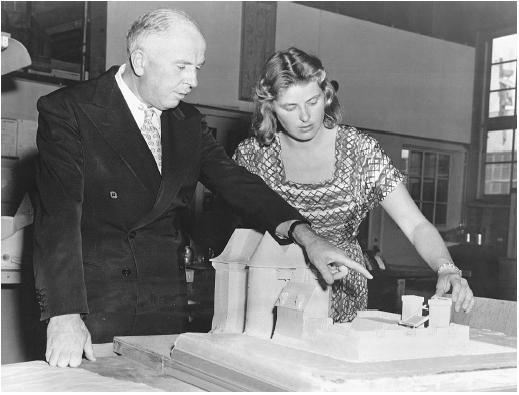
Richard Day inspecting a model with young actress Ingrid Bergman (c. 1935). Photographer unknown. Image source.
Day Begins His Career in Hollywood
After the war ended Day returned to Canada to establish himself as a commercial artist. At his father’s suggestion, Day traveled to Hollywood in 1920 to find work in the film industry. (1) Thereafter a chance encounter with director Erich von Stroheim, Day was hired as art director on von Stroheim’s 1922 production of FOOLISH WIVES. “Day served as art director on all of von Stroheim's [silent] films thereafter” including THE MERRY WIDOW (1925) and von Stroheim's masterwork GREED (1925) (4). In addition to von Stroheim, Day also worked for director Tod Browning on the films THE UNKNOWN (1927), THE SHOW (1927), WEST OF ZANZIBAR (1928), and THE THIRTEENTH CHAIR (1929). Day served as art director on several notable silent films: THE STUDENT PRINCE IN HEIDELBERG (1927), LAUGH CLOWN LAUGH (1928), OUR DANCING DAUGHTERS (1928), and ROSE MARIE (1928) (4).
In 1929 Day parted with von Stroheim and MGM, the studio where the two had been working, and began working for independent producer Samuel Goldwyn. “He served as Goldwyn's principal art director throughout most of the 1930s. During that time, he won Academy Awards for his production design for THE DARK ANGEL (1935) and DODSWORTH (1936)” (1). According to legend Day’s designs for the slum in the iconic film, DEAD END (1937) were so realistic and seedy that Goldwyn was outraged that “his money couldn't have been used to build a better slum (1)”! “In 1935, Day was the highest-paid art director in Hollywood” (3).

Richard Day, Dodsworth's Office Set from DODSWORTH (1936), Director William Wyler. Image source.
Richard Day’s Attention to Detail
Throughout his career Day excelled in portraying the harsh realities of life through his gritty set designs in films such as GRAPES OF WRATH (1940), A STREETCAR NAMED DESIRE (1951), and ON THE WATERFRONT (1954) (5). John Ford’s production of HOW GREEN WAS MY VALLEY (1941) was originally slated to be shot on location in Wales, but because of World War II, the film was forced to be shot stateside. Day along with Nathan Juran “won an Academy Award for their efforts in creating a [mining] community” (5) in Wales in the hills of Malibu, California on the Fox Ranch. (5)

Richard Day, Welsh Mill Town set from HOW GREEN WAS MY VALLEY (1941), Directed by John Ford. Image source.
Day’s art direction was, however, incredibly versatile; his “films were lush with details.”(4) Sets Day created for the film DODSWORTH (1936) range from the modern aesthetic of Mr. Dodsworth’s corporate office to elegant European interiors, a luxury steamship stateroom, and include “a lavish Italian Villa” (5). During the 1930s Day even found time to produce lithographs, many inspired by the landscapes of Mexico (4). In 1941 Day’s photograph “Vacation in Tombstone, Arizona” was shown in “Image of Freedom” an exhibition at the Museum of Modern Art in New York City, along with other artists including Charles Sheeler and André Kertész (2).

Richard Day, Capilla No. 2, Lithograph (1930). Image source.
Richard Day's Service in World War II In 1942 the Academy of Motion Pictures Arts and Sciences awarded separate awards for color and black and white productions. That year Richard Day won Academy Awards in both categories: MY GAL SAL (Cummings) in the color category and THIS ABOVE ALL (Livak) in the black and white category.
After the United States entered World War II, Day became a US citizen in order to serve in the Marines (1). During his service Day used his artistic skills Day to “ develop camouflage designs and relief mapping techniques” (1). Day did not serve as art director on any films in 1944 or 1945, (4) but he did serve as a technical advisor on the Danny Kaye comedy UP IN ARMS (1944).
After the war Day received Oscar nominations for his work on THE RAZOR’S EDGE (1946) and JOAN OF ARC (1948). Other films he served as art director on in the late 1940s include MIRACLE ON 34TH STREET (1947), MOTHER WORE TIGHTS (1947), and THE GHOST AND MRS. MUIR (1947).

Richard Day, Tibetan Temple set from THE RAZOR'S EDGE (1941), Director Edmund Goulding. Image source.
Day Works with a New Crop of Directors in the 1950s
“In the 1950s the ‘new breed’ of…directors found Day's work well suited to their needs. Richard Day could capture the brutal snap and underlying sensitivity dominating the works of such directors as Elia Kazan (4)”. Day would win his final Academy Awards for art directions on Kazan’s iconic films A STREETCAR NAMED DESIRE (1951) and ON THE WATERFRONT (1954).

Richard Day, New Orleans courtyard set for A STREETCAR NAMED DESIRE (1951), Director Elia Kazan. Image source.
Day did, however, continue to work with legendary directors such as King Vidor on SOLOMON AND SHEBA (1959), Otto Preminger on EXODUS (1960), John Ford on CHEYENNE AUTUMN (1964), and on George Stevens’s THE GREATEST STORY EVER TOLD (1965).
TORA! TORA! TORA!
Richard Day continued working until he was 74 years old with his final film the 1970 World War II blockbuster TORA! TORA! TORA! In All Movie Guide, Hal Erickson describes the film as “a painstakingly accurate restaging of the Pearl Harbor attack, for which 20th Century Fox spent more money than the Japanese had on the original attack in 1941” (6). Day’s efforts in the film earned him his final Oscar nomination.
Richard Day’s Legacy
Richard Day’s award-winning Welsh Village set for HOW GREEN WAS MY VALLEY which had been used for several other films survived until 1962, when “it was bulldozed along with the rest of the [Twentieth Century Fox] studio backlot” (6). Day died on May 23, 1972 in Hollywood, California over 50 years after his father suggested he go to there to try his fortune (1).
In 2005 Richard Day was among the first class of inductees into the Art Directors Guild Hall of Fame. (7) Day’s papers are housed at the Academy of Motion Pictures Arts and Sciences Library. In a career that spanned more than a half-century Day’s attention to detail, realistic set designs, and ability to interpret film characters through the environments they inhabit earned him numerous awards and continue to influence contemporary film production design.
References
Wikipedia, (18 July, 2022). Richard Day (art director) https://en.wikipedia.org/wiki/Richard_Day_(art_director)
Museum of Modern Art, (n.d.). Richard Day. https://www.moma.org/artists/1418
Annex Galleries, (n.d.). Richard Day. https://www.annexgalleries.com/artists/biography/531/Day/Richard
Lee, E. C., (n.d.). Richard Day. http://www.filmreference.com/Writers-and-Production-Artists-Ch-De/Day-Richard.html#ixzz7dwqYE1B4
Whitlock, C. (2010). Designs on Film: A Century of Hollywood Art Direction. It Books.
Erickson, H. , (26 November, 2007). Richard Day, New York Times Archives. https://web.archive.org/web/20071126135712/http://movies.nytimes.com/person/86980/Richard-Day
Wikipedia (29 July, 2022). Art Directors Guild Hall of Fame. https://en.wikipedia.org/wiki/Art_Directors_Guild_Hall_of_Fame
0 notes
Text







DAVID NIVEN.
Filmography
• 1936 Desengaño (Dodsworth), de William Wyler
• La carga de la Brigada Ligera (The Charge of the Light Brigade), de Michael Curtiz
• Adorable enemiga (Beloved Enemy), de H. C. Potter
• 1937 El prisionero de Zenda (The Prisoner of Zenda), de John Cromwell
• Cena en el Ritz (Dinner at the Ritz), de Harold Schuster
• 1939 Cumbres borrascosas (Wuthering Heights), de William Wyler
• Bachelor Mother, de Garson Kanin
• 1946 Escalera al cielo (A Matter of Life and Death), de Michael Powell y Emeric Pressburger
• 1947 The Bishop's Wife, de Henry Koster
• 1953 La luna es azul (The moon is blue), de Otto Preminger
• 1956 La vuelta al mundo en ochenta días (Around the World in 80 Days), de Michael Anderson
• 1957 My Man Godfrey (Al servicio de las damas), de Henry Koster
• La cabaña (The little hut), de Mark Robson
• 1958 Mesas separadas (Separate Tables), de Delbert Mann
• Buenos días, tristeza (Bonjour Tristese), de Otto Preminger
• 1959 Todas las mujeres quieren casarse (Ask Any Girl), de Winifred Wolfe (novel) George Wells
• 1961 Los cañones de Navarone (The Guns of Navarone), de J. Lee Thompson
• 1962 Dos frescos en órbita (The Road to Hong Kong), de Norman Panama (cameo)
• 1963 55 días en Pekín (55 Days at Peking), de Nicholas Ray
• La Pantera Rosa (The Pink Panther), de Blake Edwards
• 1964 Dos seductores (Bedtime Story), de Ralph Levy
• 1965 Lady L, de Peter Ustinov
• 1967 Casino Royale, de John Huston
• 1975 Tiger Paper, de Ken Annakin
• 1976 Un cadáver a los postres (Murder by Death), de Robert Moore
• 1977 Candleshoe, de Norman Tokar
• 1978 Muerte en el Nilo (Death on the Nile), de John Guillermin
• 1979 Escape to Athena, de George Pan Cosmatos
• A Man Called Intrepid, de Peter Carter
• 1980 The Sea Wolves, de Andrew V. McLaglen
Créditos tomados de Wikipedia:
https://es.wikipedia.org/wiki/David_Niven
0 notes
Photo

Hans Christian Andersen (1952)
Why is it that the “Hollywood ending” or the “fairytale ending” has become something to be chastised and not taken seriously? What is wrong with happily ever afters for audiences looking for an escape? Charles Vidor’s Hans Christian Andersen – which, in an opening intertitle, presents itself as “not the story of his life, but a fairytale about this great spinner of fairy tales” – is the sort of movie one expects to have said happily ever afters. Not so. A delightful musical from Samuel Goldwyn Productions and distributed by RKO, Hans Christian Andersen has a resolution that subverts (but does not reject) those expectations in ways very few fairytale films have ever attempted.
For powerful producer Samuel Goldwyn (1936′s Dodsworth, 1946′s The Best Years of Our Lives), Hans Christian Andersen was a fourteen-year undertaking that included several screenwriters submitting their scripts and no expenses spared. After accepting Moss Hart’s (1947′s Gentleman’s Agreement, 1954′s A Star Is Born) screenplay, Goldwyn greenlighted production on the film. Goldwyn became so endeared to this film that he could not be flustered by its clunky narrative and weaker musical segments. But regardless of its noticeable faults, the lavish Hans Christian Andersen is a fascinating film – demonstrating that fairytales can be compelling for children and adults.
We open in Odense in Denmark, where cobbler Hans Christian Andersen (Danny Kaye) passes the time creating and sharing stories with local children. Andersen’s storytelling is grating to the schoolmaster (John Brown), who pleads with local government officials to stop the cobbler from making the children tardy to school. Andersen implores to the officials that there is as much to learn outside the classroom as in it, and even the adults are stopping to listen to his tales. Andersen’s assistant is the teenaged orphan, Peter (Joseph Walsh), who persuades Andersen to travel to Copenhagen after secretly learning that the town leaders have voted to exile the cobbler. In Copenhagen, Andersen and Peter will stumble onto the Royal Danish Ballet and Andersen finds himself crushing on and intimidated by lead ballerina Doro (French international Zizi Jeanmarie, who by trade is a ballet dancer and not an actor). Doro asks Andersen – referring to him by occupation, not name – to fix her shoes. Andersen witnesses her husband, choreographer Niels (Farley Granger) cruelly criticize Doro, and Andersen believes that he is being abusive. Peter, watching what happens after his boss leaves, notices how loving Doro and Niels are to each other outside of rehearsal.
Andersen returns to his new Copenhagen storefront, not heeding Peter’s protestations that Doro and Niels are in love, and proceeds to write “The Little Mermaid” to tell Doro – in the only way he can – that Niels is the wrong man. Here, it is useful to remember that Hans Christian Andersen is intended to be a fairytale for Andersen himself, and that the film has some freedom to reinterpret his works and their central messages.
Before we talk about the passions found within, it is worthwhile to note that Hans Christian Andersen is a celebration of storytelling and what the art of creating stories and telling them to others can do. These tales bring healing to those suffering from their own anxieties; comfort to the hopeless; wisdom to confound even the wisest individuals. Andersen is the sort of character who, if he could, would spend his lifetime brightening the days of anyone who might take the time to listen. But life necessities and political pressure interfere – for Andersen and everyone else – and Denmark needs a decent cobbler.
Modern scholarship has uncovered that Andersen was incredibly shy about his feelings, largely closeted in his bisexuality, and that he tended to fall for women who did not return his ardor. Though this 1952 film does not reflect much of the real-life Andersen (for reasons of historiography and the Hays Code), it has a more complicated portrayal of what it means to fall in love and what love may seem to be than anyone might predict. Going into Copenhagen, we are unsure whether Andersen has felt and experienced love for another person. His social awkwardness when not telling stories probably suggests he knows little else outside the two main functions he performs. Watching Niels’ conduct to Doro, Andersen has been informed by the kindness imbued by his protagonists in his own stories, finding such behavior repugnant to the fictional love he has based his fairytales in. The film insists that Doro and Niels’ professional hostility to each other does not extend to their private romantic lives – an argument that is not well-supported by Hart’s screenplay. The differences between the public and private aspects of their relationship are unbelievably night and day, and it is too difficult to imagine how Doro tolerates how she is being treated. I stop short of calling Hans Christian Andersen as abuse-enabling, but the messages are too mixed.
Andersen’s conduct, too, knowing so little about Doro outside of fixing her shoes, could be better developed. Are his actions crossing the line in invading a couple’s privacy? Are they borne from actual love (which would require, above all, commitment and an effort to understand the other person in a way Andersen does not display)? What is apparent is that Andersen’s idealism towards love is childlike – as opposed to childish – and he does not listen to criticism or advice that contradicts that. When, late in the film, Doro finally understands what Andersen’s feelings for him are, she is taken aback and unable to respond. For too long she has taken the cobbler for granted, not believing that they are anything more than ballerina and cobbler who fixes her shoes. It leaves the conclusion, as frustrating as the romantic writing has been, with more pathos than the viewer might think possible.
Hans Christian Andersen is foremost a Danny Kaye piece, partly thanks to how Goldwyn and Vidor handled this production. Kaye’s on-screen partnership with the film’s many child actors is delightful to watch. He successfully embodies Andersen’s optimism and sense of wonder – where other adults might trudge their way to places they need to go, one can imagine Kaye’s Andersen being distracted by animals or flowers, not arriving where he needs to be until many minutes or hours after the fact. Kaye’s graciousness in his performance did not extend to how he treated his two adult co-stars. Irritated with Jeanmarie’s troubles understanding director Vidor (Vidor had a heavy Hungarian accent) and Granger for whatever he did, it does not help either of those two performances. Kaye also had a short temper with the film’s technicians and makeup artists – mystifying those on set, as Kaye never had any history of mistreating people during film shoots before or after Hans Christian Andersen. Jeanmarie’s lack of acting pedigree harms her supposed romantic connection with Granger’s character and more emotional scenes with Kaye. Granger’s lackadaisical performance – a year after starring in Alfred Hitchcock’s Strangers on a Train – is a critical letdown, robbing Hans Christian Andersen of romantic tension.
Samuel Goldwyn pursued Richard Rodgers and Oscar Hammerstein II (R&H had already completed Oklahoma!, Carousel, and The King and I) to write the musical score for Hans Christian Andersen, but instead settled for Frank Loesser (who composed the stage musicals Guys and Dolls and How to Succeed in Business Without Really Trying) as composer and Walter Scharf (1968′s Funny Girl, 1971′s Willy Wonka and the Chocolate Factory) as musical director. No one song is a spectacular standout but, together, Loesser’s score is a solid effort with a few numbers that will lodge themselves – your tolerance may vary, depending on how you feel about Danny Kaye before this movie – in your head. The film’s second song, “The Inchworm” (which isn’t exactly an earworm) is an ambitious example of counterpoint – when two or more musical voices that are melodically and rhythmically distinct but come together to harmonize – that displays who Andersen is as a person. It contrasts the robotic learning occurring in the classroom nearby with his daydreaming curiosity. Soon after leaving for Copenhagen is the film’s actual earworm, “I’m Hans Christian Andersen”. Like “Chim Chim Cher-ee” from Mary Poppins (1964), “I’m Hans Christian Andersen” has verses spread across the film, fitting to whatever the situation is at that moment. Yes, this means Hans Christian Andersen has many instances where he is singing his own name. You would think the people of Odense and Copenhagen would have no need for this song by a certain point!
youtube
"Wonderful Copenhagen” works as a memorable traveling song, maybe a Hollywoodized sea shanty, as it is one of the most repeated songs in the instrumental score. From the film’s songs, “Thumbelina” would be nominated for an Academy Award. And though I retrospectively disagree with that nomination, it is a charming, inventive ditty that shows Andersen always retains his compassion even at a desperate time. “The Ugly Duckling” is a simple musical retelling of the eponymous fable and is quite meaningful when taken in context.
But the film’s greatest musical achievement has to be the extended, climactic ballet sequence – presented like a borderless fantasy rather than depicting any divide between stage, orchestra, and audience. Combined with the cinematography by Harry Stradling (1938′s Pygmalion); production design by Howard Bristol (1940′s Rebecca), Antoni Clave (1961′s Black Tights), and Richard Day (1941′s How Green Was My Valley); and costume design by Clave (for the ballet sequence only; Mary Wills did the costume design for everything else, and she too should deserve acclaim), the ballet is a stupendous feat of visual creativity following in the footsteps of two breakout movies that started this trend in Hollywood musicals – 1948′s The Red Shoes and 1951′s An American in Paris. Yes, Niels takes Andersen’s idea to adapt it for the ballet stage while failing to understand Andersen’s true intentions behind the work. With the music based on five pieces by Franz Liszt and adapted by Heinz Roemheld (1942′s Yankee Doodle Dandy, 1945′s Wonder Man), it is a cinematic splendor that surprisingly is not from a better movie.
Before the film’s release, rumors in Denmark had many believing that Hans Christian Andersen would be an unfair depiction of their national hero. To stem the growing unrest, Goldwyn sent Kaye on a goodwill pre-release tour to Denmark. From the moment Kaye arrived at the airport in Copenhagen and made his way to lay flowers at Andersen’s statue, he was followed by thousands of his fans. At the statue he joked, “I came here to see if you would murder me.” Kaye would be killed with Danish kindness, accomplishing what he set out to do. The film became a critical and financial success in Denmark, across Europe, and in the United States – where it became the eighth-highest grossing movie of the year. After years of struggling to produce the film, Goldwyn was relieved the film was well-received.
Hans Christian Andersen would be the final film he made with Samuel Goldwyn – the executive who made him a movie star after distributing Wonder Man. No longer contracted to Goldwyn, Kaye’s career existed outside the Hollywood Studio System as he freelanced for the major studios and could exercise whatever creative authority he wished. Hans Christian Andersen can be difficult to watch because of its scattered plot and underwritten motivations for its central characters. Yet, in this fairytale of a fairytale spinner, it also pushes forward a complex take on love that few other films of this genre attempt – imbuing with musicianship and artistry as worthy as anything found in 1950s Hollywood. Though his faults are there for us to see, Hans Christian Andersen lives a good, honest life. With all the uncertainty and pain he goes through in the course of this story, he is never embittered, always hopeful.
My rating: 7.5/10
^ Based on my personal imdb rating. Half-points are always rounded down. My interpretation of that ratings system can be found here.
#Hans Christian Andersen#Charles Vidor#Samuel Goldwyn#Danny Kaye#Farley Granger#Zizi Jeanmaire#Joseph Walsh#Philip Tonge#Moss Hart#Myles Connolly#Harry Stradling#Frank Loesser#Walter Scharf#TCM#My Movie Odyssey
4 notes
·
View notes